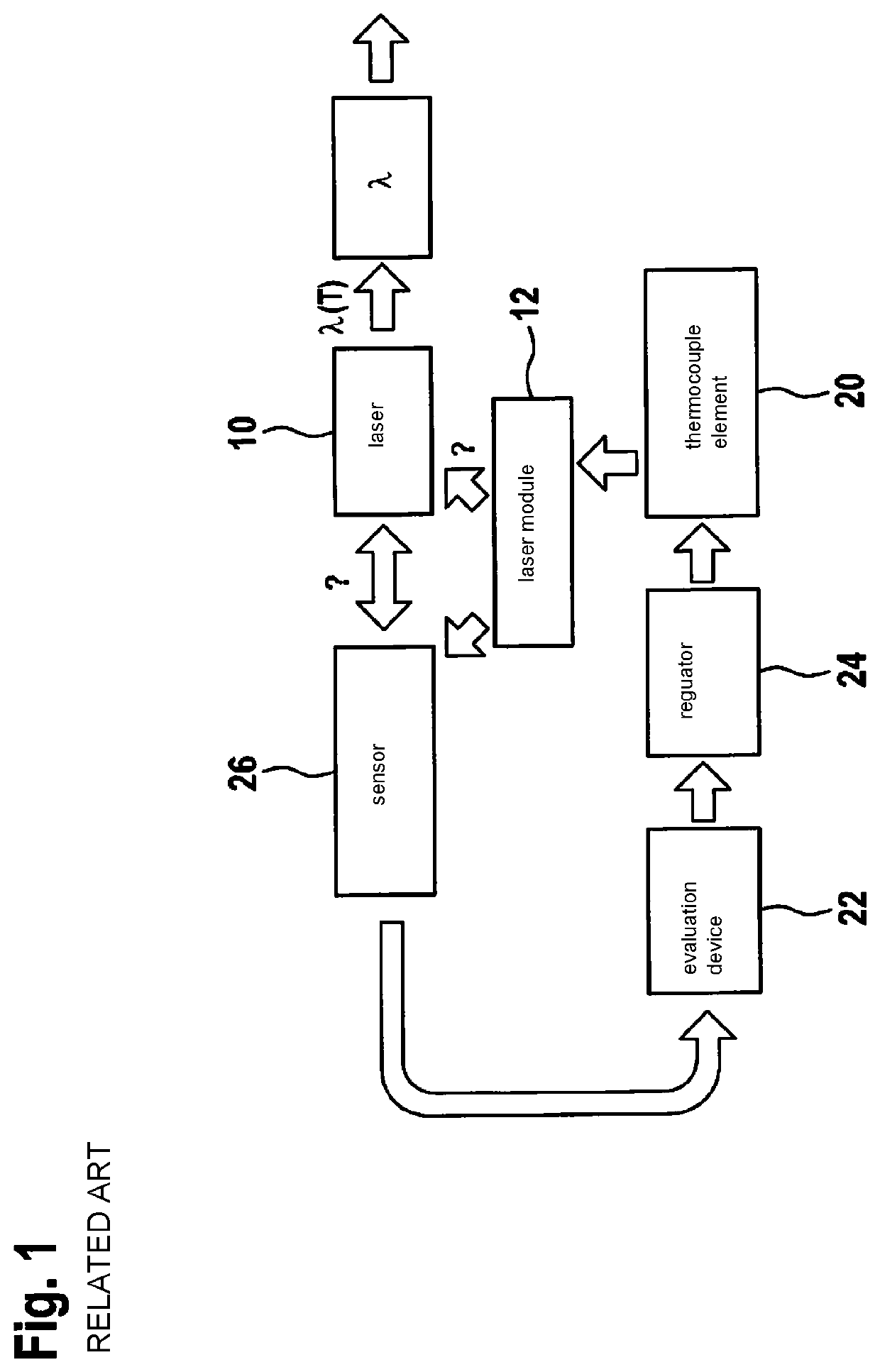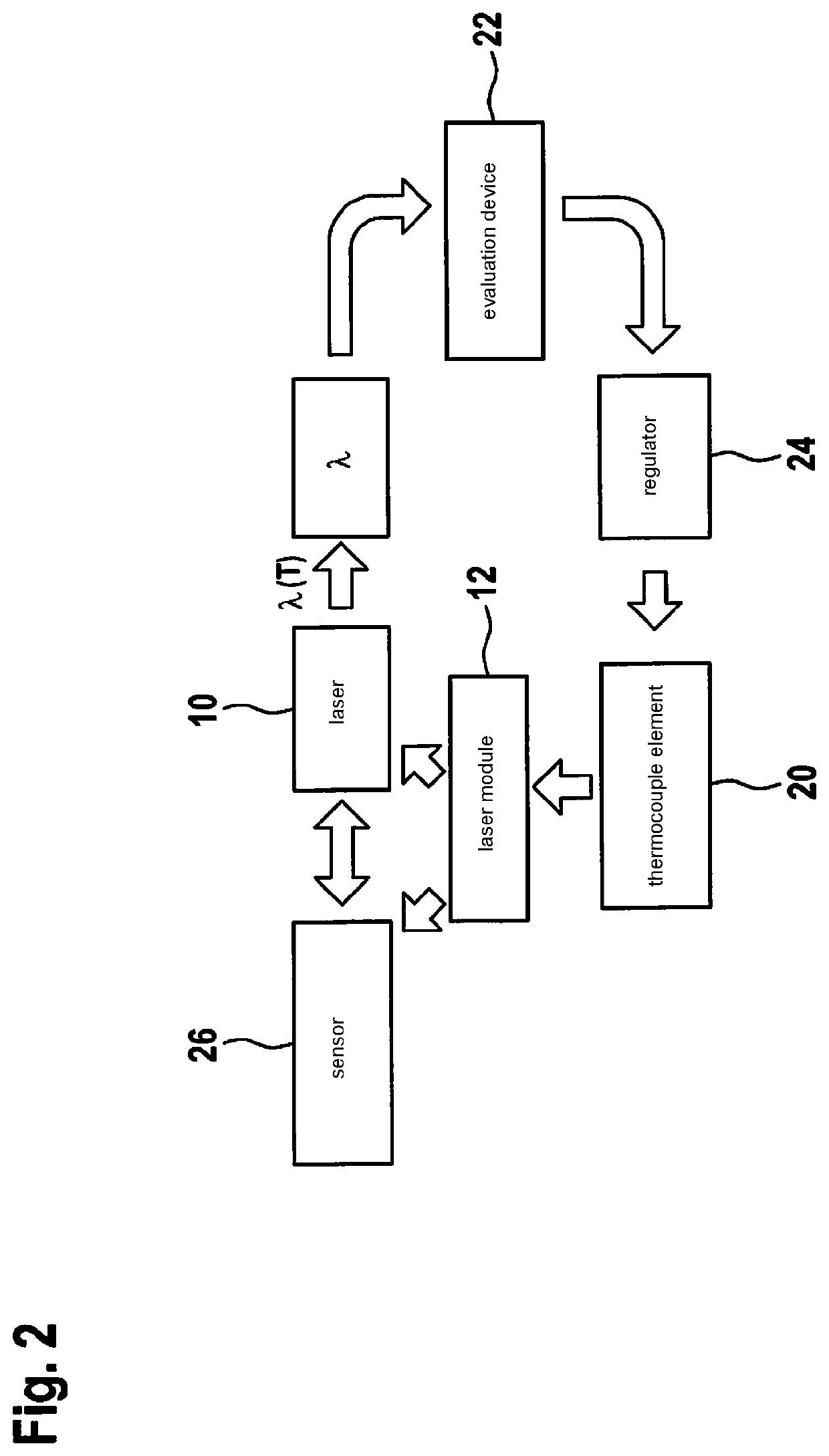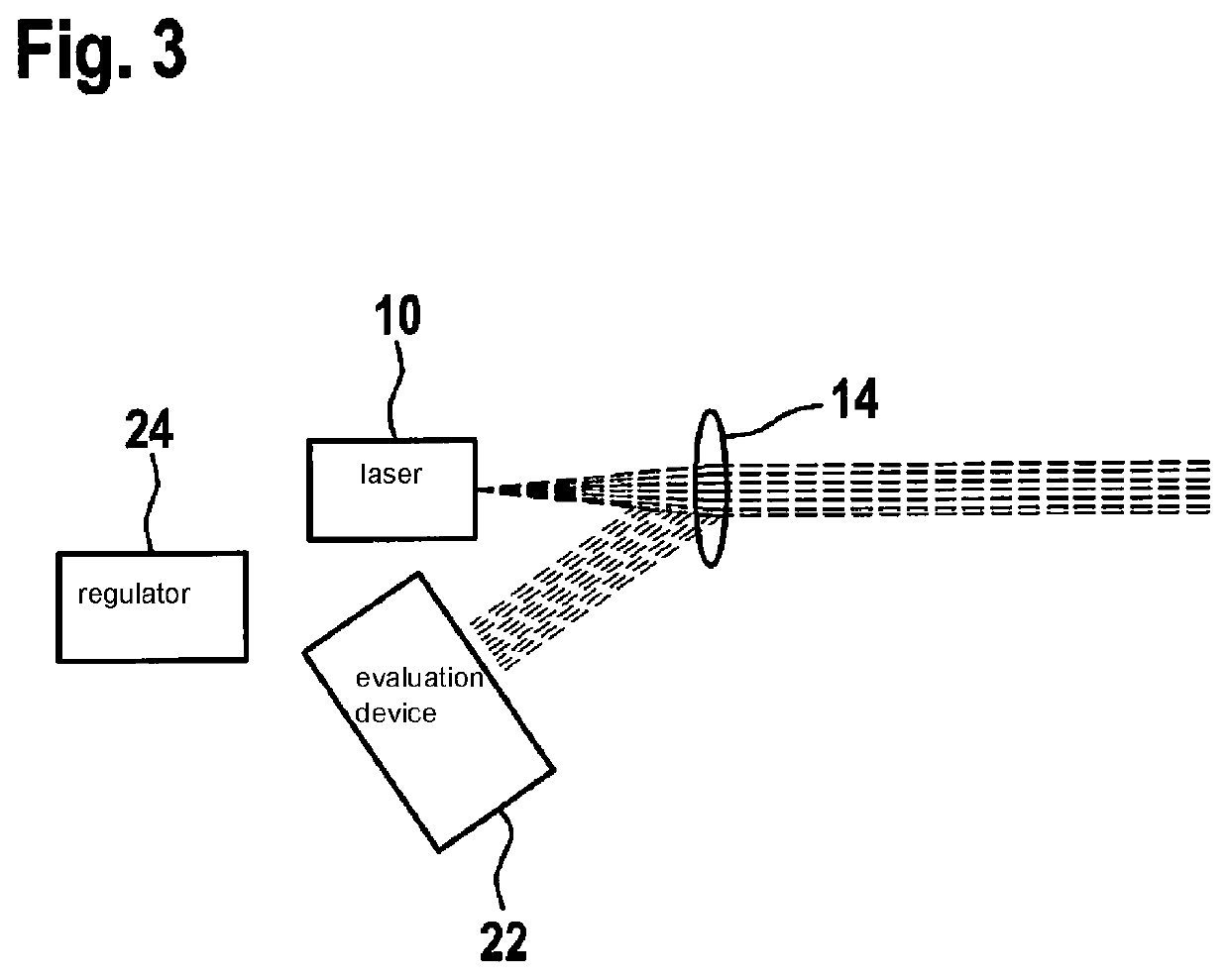Stabilized LiDAR system and method for stabilization
a lidar system and stabilization technology, applied in lasers, instruments, laser details, etc., can solve the problems of noise contribution, difficult or impossible separation of reflected signal and noise with increasing distance, and greatly limited types of suitable lasers
- Summary
- Abstract
- Description
- Claims
- Application Information
AI Technical Summary
Benefits of technology
Problems solved by technology
Method used
Image
Examples
Embodiment Construction
[0047]FIG. 1 shows a schematic diagram of a control chain for laser stabilization in the related art. The arrows drawn in the figure indicate the dependencies between the individual components of the control chain. The control chain shown in the figure includes a laser 10, laser 10 being designed for emission of monochromatic LiDAR radiation (wavelength λ) within a wavelength working range λ(T); a thermocouple element 20 being configured to set working temperature T of laser 10; a means for evaluation 22 being designed to determine a measure for the deviation from actual temperature Tactual to a setpoint temperature Tsetpoint from actual temperature Tactual of laser 10 measured by a sensor 26; and a means for regulation 24 being designed to control thermocouple element 20 on the basis of the measure of deviation determined by the means for evaluation 22 in such a way that working temperature T of laser 10 is set to a value corresponding to setpoint temperature Tsetpoint. Laser 10 ma...
PUM
 Login to View More
Login to View More Abstract
Description
Claims
Application Information
 Login to View More
Login to View More - R&D
- Intellectual Property
- Life Sciences
- Materials
- Tech Scout
- Unparalleled Data Quality
- Higher Quality Content
- 60% Fewer Hallucinations
Browse by: Latest US Patents, China's latest patents, Technical Efficacy Thesaurus, Application Domain, Technology Topic, Popular Technical Reports.
© 2025 PatSnap. All rights reserved.Legal|Privacy policy|Modern Slavery Act Transparency Statement|Sitemap|About US| Contact US: help@patsnap.com



